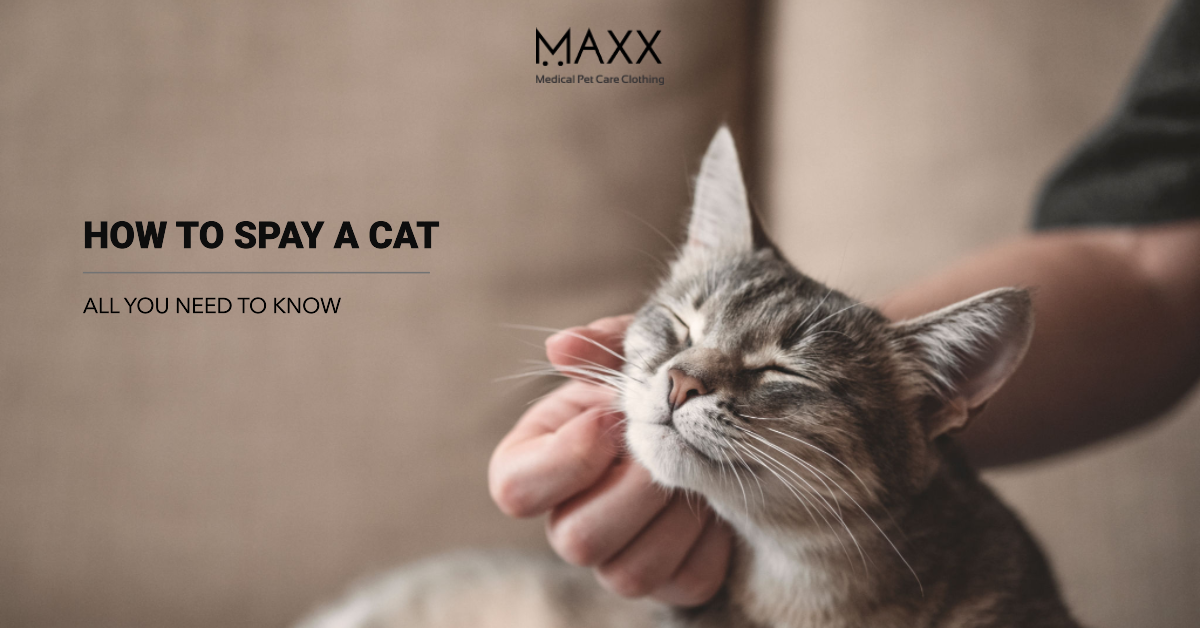MAXX Pet Blogs
How to Spay a Cat:The Ultimate Guide for Responsible Pet Ownership
Spaying your cat is an essential part of responsible pet ownership.
In this article, we’ll guide you through the process of how to spay a cat, including the benefits, preparation, surgery, and aftercare.
Introduction:
Spaying your cat is one of the most important decisions you can make as a pet owner.
It not only helps control the population of stray cats but also has many benefits for your cat’s health and behavior.
However, the thought of surgery can be intimidating for many pet owners. That’s why we’ve created this ultimate guide to help you understand how to spay a cat and what to expect during the process.
TIPS FOR HOW TO SPAY A CAT
Spaying a cat is a surgical procedure that involves removing the cat’s reproductive organs. It is a common and safe procedure that is important for controlling the cat population and preventing certain health issues. Here are some tips for how to spay a cat:
- Choose a qualified veterinarian: Ensure that the veterinarian you choose is qualified and experienced in performing spaying procedures on cats. You can ask for recommendations from friends or family members or check online reviews.
- Schedule the surgery at the right time: Spaying can be performed when the cat is between 4-6 months old. It is recommended to spay a cat before they reach sexual maturity to avoid behavioural issues and prevent unwanted pregnancies.
- Follow pre-surgery instructions: Your veterinarian will provide you with instructions to prepare your cat for surgery. This may include fasting your cat for a certain period before the surgery.
- Monitor your cat post-surgery: After the surgery, your cat may need pain medication and monitoring for a few days. Make sure to follow your veterinarian’s instructions for post-surgery care, including providing a comfortable and quiet space for your cat to rest and recover.
- Prevent your cat from licking the incision area: Your cat may try to lick the incision area, which can cause infection or delay healing. You can prevent this by using an Elizabethan collar or a special recovery suit designed for cats.
- Monitor for signs of complications: Although spaying is a routine procedure, complications can occur. Watch for signs of lethargy, loss of appetite, excessive vomiting, bleeding, or discharge, and contact your veterinarian immediately if you notice any of these symptoms.
What is Spaying?
Spaying is a surgical procedure that removes a female cat’s reproductive organs, including the ovaries and uterus.
The procedure is also known as an ovariohysterectomy. Spaying prevents female cats from getting pregnant and eliminates their heat cycles.

Benefits of Spaying:
There are many benefits of spaying your cat, including:
- Reduces the risk of developing breast cancer and uterine infections.
- Prevents unwanted litters and reduces the population of stray cats.
- Reduces your cat’s desire to roam and decreases the risk of getting lost or injured.
- Helps prevent behavioral issues such as spraying and aggression.
- Helps your cat live a longer, healthier life.
Preparation to Spay a Cat :
Before the spaying procedure, you should prepare your cat by:
- Scheduling a pre-operative appointment with your vet to discuss the procedure and any concerns you may have.
- Withholding food and water for 12 hours before the surgery.
- Making sure your cat is up to date on all necessary vaccinations and has no underlying health issues.

The Spaying Procedure:
The spaying procedure typically takes around 30 minutes and is performed under general anesthesia.
During the procedure, the vet will make an incision in your cat’s abdomen and remove the ovaries and uterus.
After the surgery, your cat will be monitored closely as she wakes up from the anesthesia.
Aftercare for Spayed Cats:
After the spaying procedure, you should take care of your cat by:
- Providing a warm and comfortable place for your cat to rest.
- Keeping your cat indoors and away from other animals for at least a week.
- Administering any prescribed medications, including pain relief and antibiotics.
- Monitoring the surgical incision for signs of infection or inflammation.
- Limiting your cat’s activity and playtime until she has fully recovered.
FAQs About Spaying Cats:
- Is spaying painful for my cat? Spaying is a surgical procedure and can cause some discomfort for your cat. However, your vet will provide pain relief medication to help alleviate any discomfort.
- What is the best age to spay a cat? The best age to spay a cat is between four and six months. However, your vet can perform the procedure at any age.
- Can my cat still get pregnant after spaying? No, spaying removes your cat’s reproductive organs, and she cannot get pregnant.
Conclusion:
Spaying your cat is a responsible decision that has many benefits for both your cat and the community.
By understanding how to spay a cat and what to expect during the process, you can help ensure that your cat lives a healthy and happy life.
Remember to always consult your vet for any questions or concerns you may have about how tp spay a cat .

